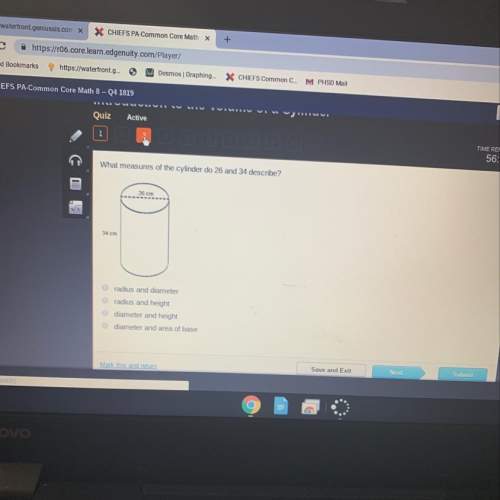
Mathematics, 09.11.2019 06:31 tdyson3p6xvtu
Quality control quality control is an soda-dispensing machines that fill bottles with 600 ml of soda. over time, the dispensing machines can become less precise. that is, older machines may dispense too much or too little soda into the bottles. when something becomes less precise, we say that it has lost its precision. when this occurs, the machine important aspect of the manufacturing process, suppose a local company manufactures requires an adjustment. in this case, a soda dispensing machine will need adjustment if the mean amount of soda dispensed is different than 600 ml. the owner of one amount of soda machines dispensed during the day are listed below soda dispensing machine believes that her machine has lost precision. she measures the dispensed at eight random times throughout the day. the eight amounts of soda her 60014 60004 9998 600.15 599.92599.85 599.92 599.81 600.14 at 5% level of significance, is there sufficient evidence to conclude that this machine needs an adjustment? research has indicated that the amounts of soda dispensed from the machine are approximately normal in their distribution. step 1: determine the hypotheses 1 state the null and alternative hypotheses. 2 is this a left-tailed, right-tailed, or two-tailed test? be sure to explain your answer. step 2: collect the data 3 are the criteria for the approximate normality of the sampling distribution of sample means satisfied? 4 calculate the sample size, sample mean, and sample standard deviation. statway version 3.1, 0 2018 wested. all rights reserved. lesson 9.3.1: hypothesis tests for population means s is the sample mean consistent with the alternative hypothesis? step 3: assess the evidence 6 calculate the test statistic for the observed sample mean. 7 sketch the t-distributio represents the p-value. n and identify the position of the observed test statistic. shade the area that 8 use the test statistic to find the p-value. step 4: state a conclusion how does the p-value compare to the significance level? should we reject or fail to reject the null hypothesis? 9 10 what can you conclude about the alternative hypothesis? 11 state a conclusion in the context of the problem.

Answers: 3


Another question on Mathematics

Mathematics, 21.06.2019 18:20
Match each inequality to the number line that represents its solution
Answers: 3

Mathematics, 21.06.2019 18:40
Juliana says that she can use the patterns of equivalent ratios in the multiplication table below to write an infinite number of ratios that are equivalent to 6: 10. which statement explains whether juliana is correct? she is correct because she can multiply 6 and 10 by any number to form an equivalent ratio. she is correct because 6: 10 can be written as 1: 2 and there are an infinite number of ratios for 1: 2. she is not correct because the multiplication table does not include multiples of 10. she is not correct because 6: 10 is equivalent to 3: 5 and there are only 9 ratios in the multiplication table that are equivalent to 3: 5.
Answers: 1

Mathematics, 21.06.2019 19:00
Ab based on the given diagram, if m_1 = 60° then m 2 = 30 60 90 180
Answers: 1

Mathematics, 21.06.2019 20:00
Pepe and leo deposits money into their savings account at the end of the month the table shows the account balances. if there pattern of savings continue and neither earns interest nor withdraw any of the money , how will the balance compare after a very long time ?
Answers: 1
You know the right answer?
Quality control quality control is an soda-dispensing machines that fill bottles with 600 ml of soda...
Questions








Mathematics, 13.12.2020 07:30

Advanced Placement (AP), 13.12.2020 07:30



Mathematics, 13.12.2020 07:30

Mathematics, 13.12.2020 07:30

Social Studies, 13.12.2020 07:30

Physics, 13.12.2020 07:30

English, 13.12.2020 07:30


Mathematics, 13.12.2020 07:30

Mathematics, 13.12.2020 07:30

Mathematics, 13.12.2020 07:30




